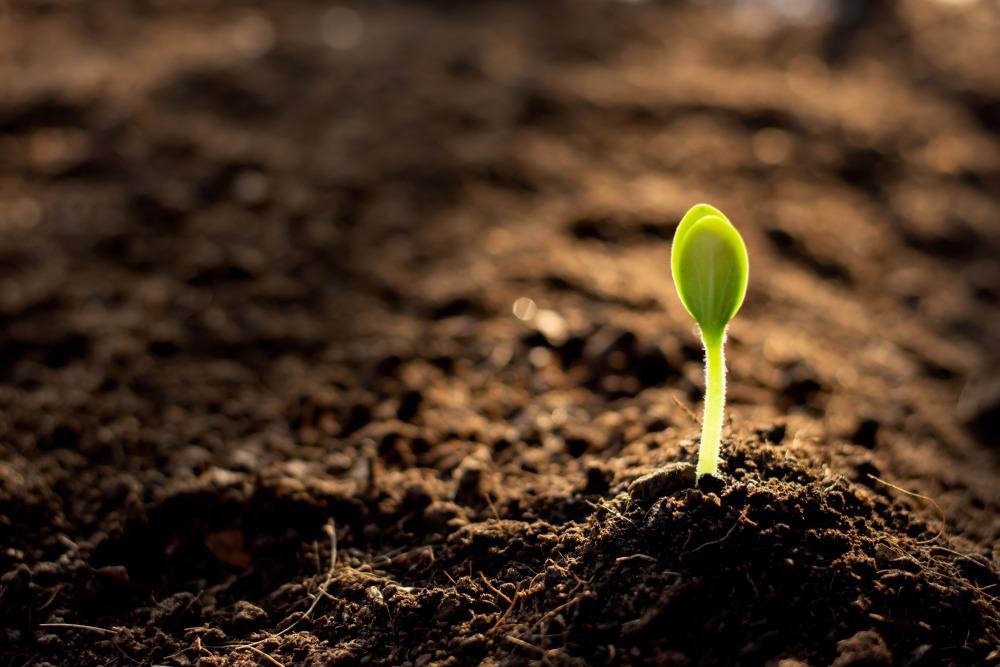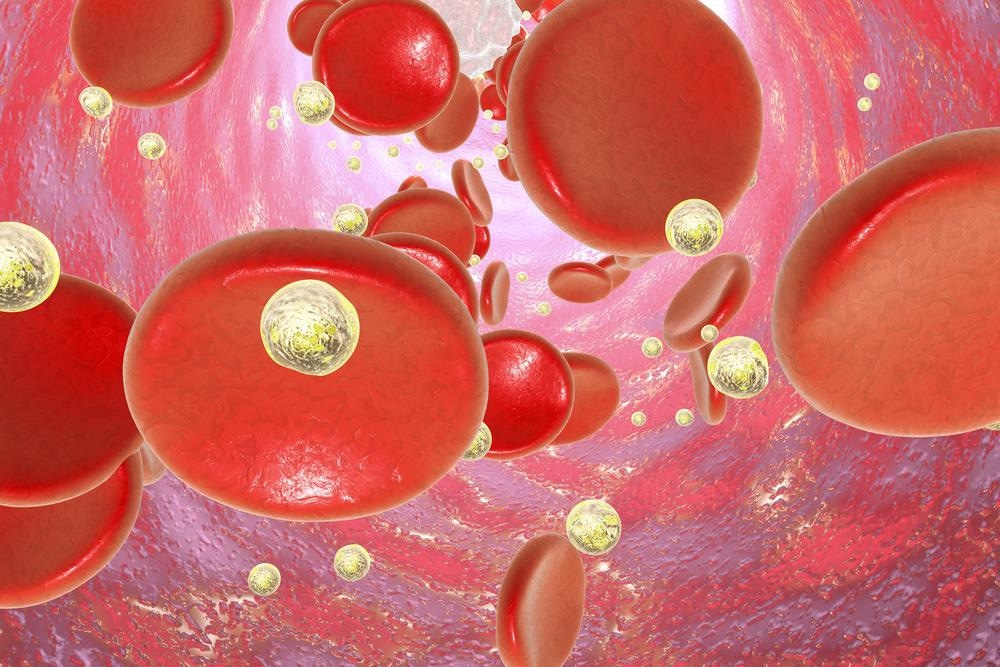Although nanomaterials present opportunities in various fields of science and technology, they also come with some risks and uncertainties. The application of nanoformulations in agriculture has substantially enhanced crop productivity and protects plants from various biotic and abiotic stresses.

Image Credit: kram-9/Shutterstock.com
Despite this, long-term accumulation of nanoparticles in the soil could alter physiological processes of the soil microbes and plants' physiological processes and affect the integrity of cellular and sub-cellular organelles organizations. It is imperative to understand both the advantages and disadvantages associated with the applications of nanoparticles.
The increased use of nanoparticles in various industries has resulted in the unsafe disposal of enormous amounts, i.e., several hundred tons of nanomaterials, every year. Scientists have detected nanoparticles in atmospheric air, soils, water bodies, algae, fungi, tissues of land plants and tissues of land animals. This article will focus on the accumulation of nanoparticles in the soil and its risks.
How do Nanoparticles Reach the Soil?
Nanoparticles can enter the soil via many different pathways, such as atmospheric precipitation, direct soil absorption of gaseous compounds, sedimentation in the form of dust and aerosols, and abscission of leaves or as a result of anthropogenic activity. Additionally, nanoparticles used for bioremediation could also discharge a significant amount into the environment.
Researchers have reported that landfills and wastewater plants release nanoparticles as concentrated sludge or discharged effluents. Application of nanofertilizers and nanopesticides, seed treatment, and hydroponic solutions have been associated with releasing nanoparticles in agricultural soils. For instance, researchers estimated that 95% of copper used would eventually reach the soil and aquatic sediments.
The rate of accumulation of nanoparticles depends on the speed of transformations, i.e., conversion of metallic form to nano form. The conversion rates are dependent on the soil properties (e.g., pH, ionic, etc.) and composition (e.g., organic and water content), which mediates the dissolution processes of metal-based nanoparticles. Researchers have indicated that ionic or dissolved forms of nanoparticles exhibit higher bioavailability and greater environmental risks.
Various mechanisms augment the bioavailability of nanoparticles. Two of the methods by which bioavailability enhancement of nanoparticles occurs in the rhizosphere are microbial siderophores and root exudates.
Plants and microbes produce organic ligands for the solubilization of minerals from inadequately available sources. Siderophores are low molecular weight organic compounds produced by many soil microorganisms, which can chelate iron under iron restraining conditions. According to a recent study, siderophores have a great affinity towards other nanoparticles, such as copper, zinc, and silver. Additionally, root exudates have been associated with enhancing copper nanoparticles in the soil.
Risks Associated with the Accumulation of Nanoparticles in Soils
(a) Nanoparticles and Plant Systems
One of the primary concerns associated with nanoparticles in soils is their uptake and accumulation in plant tissues. The scientific community has been concerned about the accumulation of nanoparticles in edible plant tissues, which could negatively impact human health via the food chain.
The nanoparticles present in the soil interact with the plant root system and, subsequently, get translocated to aerial parts of the plant. These nanomaterials accumulate in cellular or subcellular organelles. For instance, copper oxide nanoparticles are readily adsorbed by the root surface and are translocated to the aerial parts of the plant.
Researchers observed that zinc oxide nanoparticles that bioaccumulated in the roots and shoots of Brassica juncea, caused modification of plants' physiological processes and affected the integrity of cellular and sub-cellular organelles organizations. It was also found to negatively alter lipids, proteins, and nucleic acid content by releasing hydroxyl radicals.
The rate of bioaccumulation of nanoparticles by the plants' root is dependent on the properties of the nanoparticle as well as environmental conditions. For instance, scientists reported that soil organic matter decreases the accumulation of cerium oxide nanoparticles by the root of Zea mays.
Scientists revealed that positively charged gold nanoparticles are readily taken up by the roots of Raphanus raphanistrum and Cucurbita pepo and are accumulated in their shoots.
Some of the commonly bioaccumulated nanoparticles, such as copper oxide, lanthanum oxide, cerium oxide, and nickel oxide, cause a decrease in the rate of photosynthesis and transpiration. Additionally, they negatively alter the integrity of cellular and subcellular organisms that affect plants' growth and functions. Some nanoparticles induce oxidative stress and produce antioxidants.

Image Credit: Kateryna Kon/shutterstock.com
(b) Nanoparticles and Human Health
The introduction of nanoparticles in the food chain via bioaccumulation in the plant tissues of an edible plant can be harmful to human beings. Nanoparticles are non-degradable or may gradually degrade in the organs. Phagocytes, whose function is to clear foreign particles, may become overloaded by nanoparticles and, thereby, activate stress reactions, which may cause inflammation.
Bioaccumulation of nanoparticles can also induce toxicity. Nanoparticles induce different types of toxicity, such as the chemical toxicity of materials. Due to their small size and unique shape, they may adhere to the cellular membranes and invade cells, which might impair cellular functions. Two of the nanoparticles that exhibit cytotoxicity and genotoxicity to mice cells are silver and titanium dioxide nanoparticles.
Besides ingestion of nanoparticles due to their presence in the food chain, nanoparticles are also introduced into humans via the dermal route, such as applying cosmetics containing nanoparticles. In addition, nano-based medicines are also introduced to humans by injection. Nanoparticles may aid in the production of free radicals that cause cell damage.
(c) Nanoparticles and Soil Microbes
A large part of the metals or metal oxides produced ultimately reach the soil and penetrate microbial cells via mechanisms, such as endocytosis. Many nanoparticles, such as silver and copper, possess antimicrobial properties and can directly affect soil microbes.
Researchers stated that the chemical interaction of nanoparticles at the nano-bio interface induces cytotoxicity. Nanoparticles interact with microbial proteins and modify their configuration, causing an inhibition of signaling processes in cells and affecting enzymes' catalytic activity. It is thought that nanoparticles affect mycorrhizal development, which is extremely beneficial for plants.
Continue reading: How can Algae Benefit Nanotechnology Research?
References and Future Reading
Ali, S. and Khan, N. (2021) Uptake, Translocation, and Consequences of Nanomaterials on Plant Growth and Stress Adaptation. Journal of Nanomaterials. 6677616. https://doi.org/10.1155/2021/6677616
Rajput, V. et al. (2020) Accumulation of nanoparticles in the soil-plant systems and their effects on human health. Annals of Agricultural Science. 65(2). pp. 137-143. https://doi.org/10.1016/j.aoas.2020.08.001
Hui, T. et al. (2019) Are Nanoparticles a Threat to Mycorrhizal and Rhizobial Symbioses? A Critical Review. Frontiers in Microbiology. 10. https://doi.org/10.3389/fmicb.2019.01660
Kumar, P. et al. (2018) Ecological Risks of Nanoparticles: Effect on Soil Microorganisms. Nanomaterials in Plants, Algae, and Microorganisms. 1. pp. 429-452. https://doi.org/10.1016/B978-0-12-811487-2.00019-0
Dang, F. et al. (2018|) Oral bioaccessibility of silver nanoparticles and ions in natural soils: Importance of soil properties. Environmental Pollution. 243. pp. 364-373. https://doi.org/10.1016/j.envpol.2018.08.092
Schlich, K. et al. (2013) Hazard assessment of a silver nanoparticle in soil applied via sewage sludge. Environmental Sciences Europe. 25(17). https://doi.org/10.1186/2190-4715-25-17
Disclaimer: The views expressed here are those of the author expressed in their private capacity and do not necessarily represent the views of AZoM.com Limited T/A AZoNetwork the owner and operator of this website. This disclaimer forms part of the Terms and conditions of use of this website.